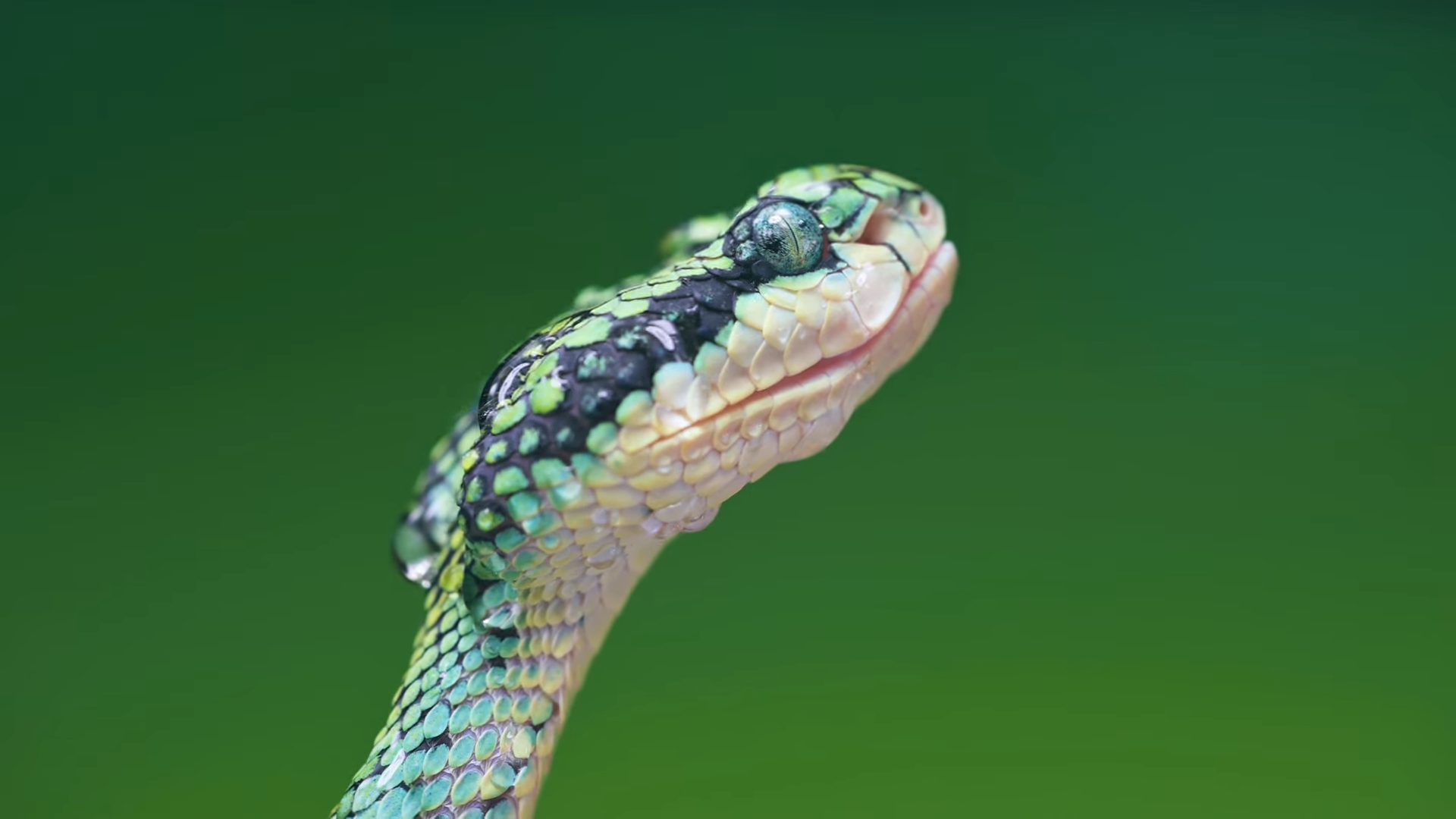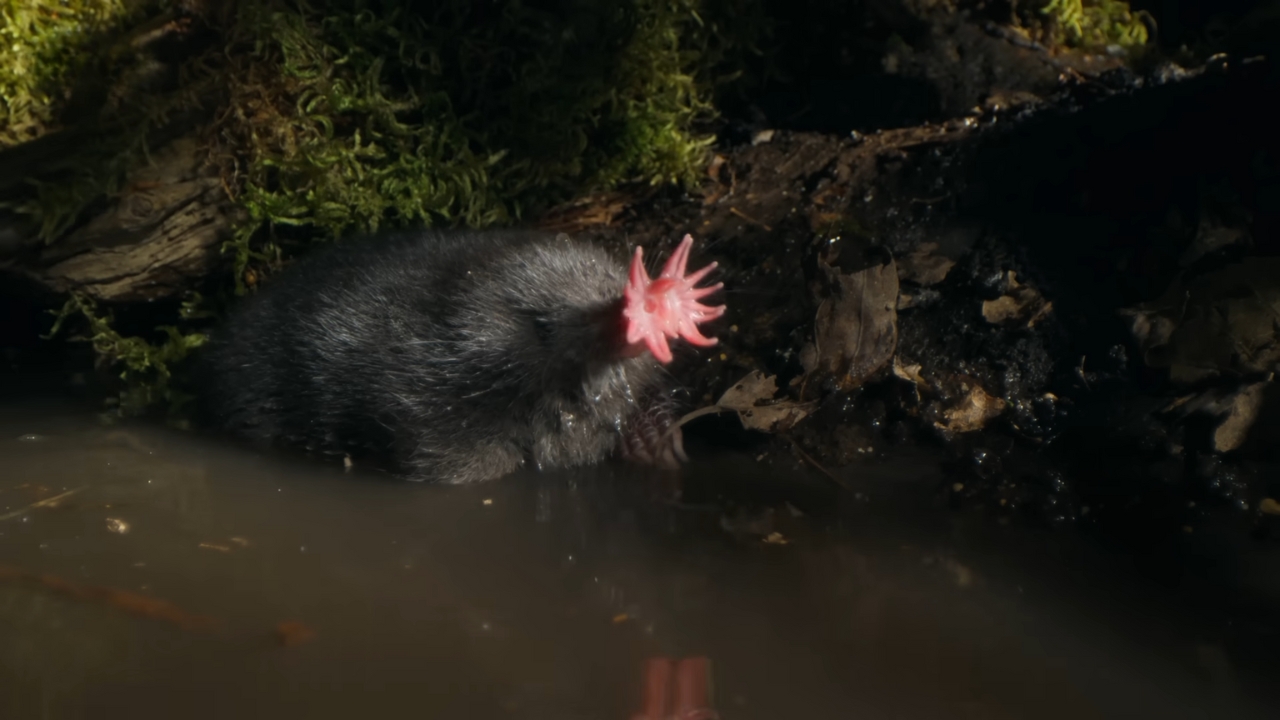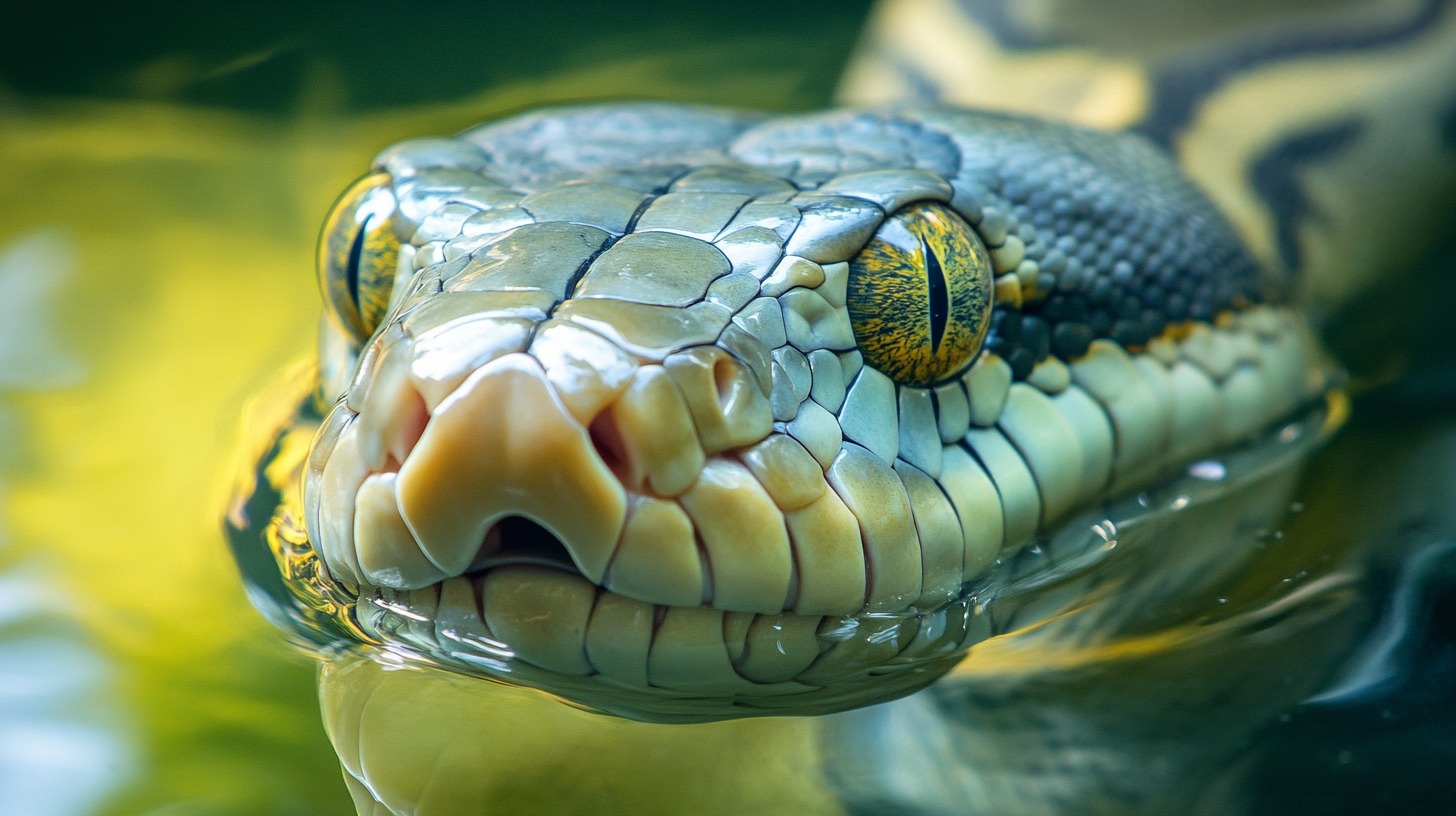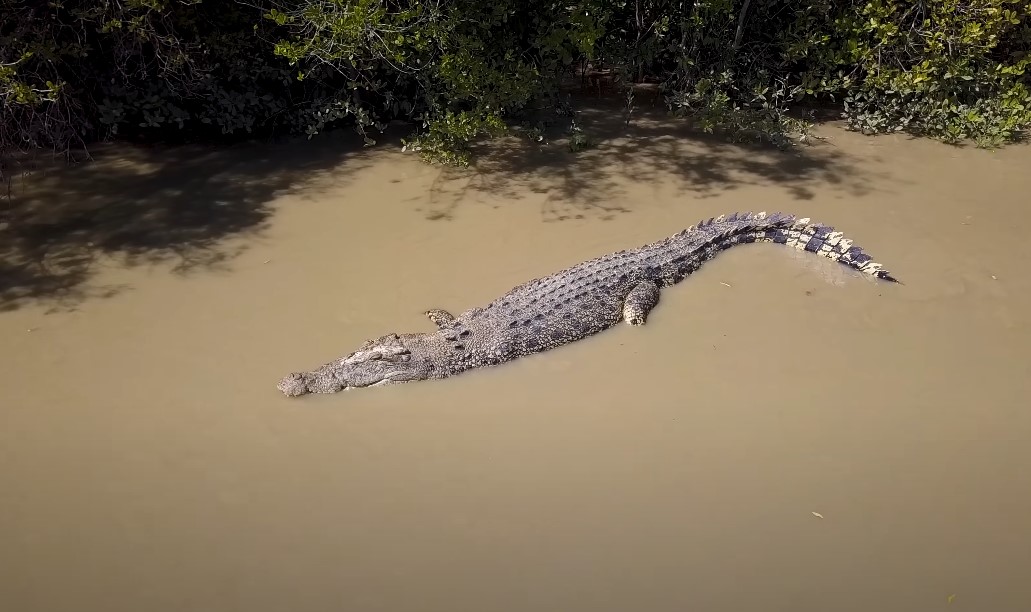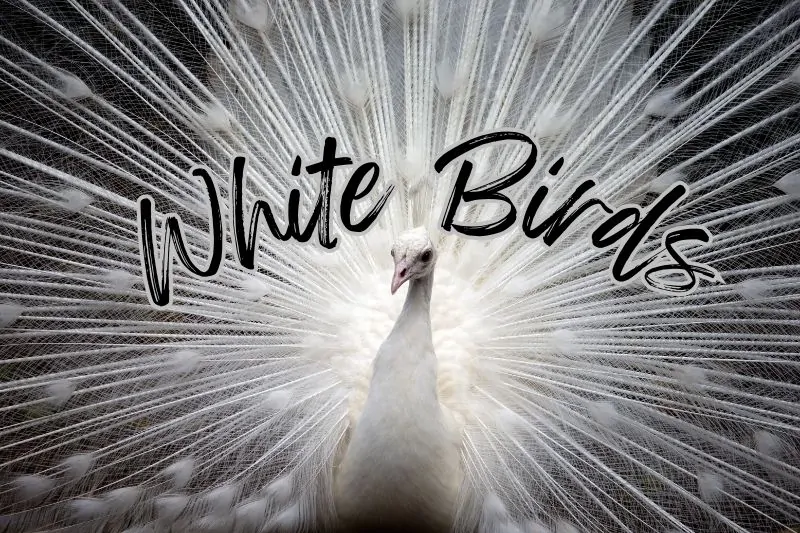
Share Post:
White birds with long beaks are notable for their striking appearance and specialized behaviors.
Their clean white plumage and elongated beaks are not just visually distinctive but also serve practical purposes, helping these birds hunt and forage.
Their long beaks allow them to catch prey in a variety of environments, including water, sand, and mud.
These birds have adapted to different habitats and feeding techniques, from wading through wetlands like the Great Egret to diving in open oceans like the Masked Booby.
20. Royal Tern (Thalasseus Maximus)
The Royal Tern is one of the many striking white birds commonly found along coastal regions. It is easily recognizable by its bright orange beak and black crest, especially during the breeding season. These birds are often seen flying over the water, diving for fish near the surface.
They are known for their social behavior, often nesting in dense colonies. They perform a courtship display where the male offers a fish to the female, a romantic gesture in the bird world!
- Size: 18-21 inches (45-53 cm) in length
- Wingspan: 43-47 inches (109-120 cm)
- Habitat: Coastal beaches, lagoons, and bays
- Diet: Primarily fish, but occasionally crustaceans
19. Little Egret (Egretta garzetta)
Similar to its relative the Snowy Egret, the Little Egret is another graceful white bird, with a slender black beak and long black legs. It is often seen hunting in shallow waters, using quick, darting movements to catch small fish.
Fun Fact: The Little Egret was nearly driven to extinction in Europe during the 19th century due to the demand for its feathers in the fashion industry. Thanks to conservation efforts, their populations have rebounded.
- Size: 22-26 inches (55-65 cm) in length
- Wingspan: 35-41 inches (88-105 cm)
- Habitat: Wetlands, riverbanks, and tidal flats
- Diet: Fish, amphibians, and insects
18. Northern Gannet (Morus bassanus)

The Northern Gannet is a large seabird known for its dramatic plunge dives into the ocean. Their long, sharp beaks are perfectly adapted for catching fish underwater, and their white plumage contrasts sharply with their black wingtips.
Northern Gannets have binocular vision, which helps them judge distances precisely when diving. They can hit the water at speeds of up to 60 mph (100 km/h) without injury due to air sacs in their face and chest that cushion the impact.
- Size: 34-39 inches (87-100 cm) in length
- Wingspan: 65-70 inches (165-180 cm)
- Habitat: Coastal cliffs and open oceans
- Diet: Fish, particularly herring and mackerel
17. Cattle Egret (Bubulcus ibis)
Cattle Egrets are smaller white birds with a short, stocky appearance compared to other egrets. They are often seen following livestock, picking off insects stirred up by the animals. During the breeding season, they develop striking orange plumes on their head, chest, and back.
Fun Fact: Originally native to Africa and Asia, Cattle Egrets have expanded their range worldwide, even reaching the Americas. They are now among the most widespread herons due to their adaptability and association with agriculture.
- Size: 18-22 inches (45-56 cm) in length
- Wingspan: 34-38 inches (88-96 cm)
- Habitat: Farmlands, wetlands, and grasslands
- Diet: Insects, small mammals, and frogs
16. Ross’s Gull (Rhodostethia rosea)

Though relatively rare, Ross’s Gull is a small, delicate white bird with a slight pinkish hue to its plumage, especially on its breast. It has a distinctive wedge-shaped tail and a long, thin beak perfect for picking small invertebrates off ice or water surfaces.
Ross’s Gulls breed in remote areas of the high Arctic, making them elusive to many birdwatchers. These birds have one of the most restricted breeding ranges of any gull species.
- Size: 11-13 inches (28-33 cm) in length
- Wingspan: 35-39 inches (89-99 cm)
- Habitat: Arctic tundra and coastal regions
- Diet: Crustaceans, fish, and plankton
15. Black-winged Stilt (Himantopus himantopus)
Known for its striking contrast of black and white plumage, the Black-winged Stilt has long pink legs and a thin, black beak. This white bird is often seen wading through shallow waters, probing the mud with its long beak to catch small invertebrates.
Fun Fact: Black-winged Stilts are among the wading birds with the longest legs relative to body size. Their legs are so long that they often seem ungainly on land but are perfectly suited for wading through deep waters.
- Size: 13-15 inches (33-39 cm) in length
- Wingspan: 26-31 inches (66-80 cm)
- Habitat: Wetlands, salt marshes, and lagoons
- Diet: Insects, crustaceans, and small fish
14. Sandwich Tern (Thalasseus sandvicensis)

This sleek white bird is distinguished by its black bill with a yellow tip and a shaggy black crest. Sandwich Terns are agile fliers, often seen hovering above the water before diving to catch fish.
The Sandwich Tern gets its name from the town of Sandwich in England, where the bird was first scientifically described. Despite its “foodie” name, it doesn’t eat sandwiches, sticking mostly to small fish.
- Size: 15-17 inches (38-43 cm) in length
- Wingspan: 33-35 inches (85-90 cm)
- Habitat: Coastal areas, beaches, and estuaries
- Diet: Small fish and crustaceans
13. White Ibis (Eudocimus albus)
The White Ibis is another iconic white bird, easily identified by its long, down-curved red beak and red legs. It is often seen wading through shallow waters in search of small prey, using its sensitive bill to feel for food in the mud.
Fun Fact: In ancient Egypt, the Ibis was a symbol of the god Thoth, who was associated with wisdom and writing. White Ibises are also known for their synchronized flight patterns when migrating in flocks.
- Size: 22-26 inches (56-66 cm) in length
- Wingspan: 37-41 inches (95-105 cm)
- Habitat: Marshes, wetlands, and coastal regions
- Diet: Insects, crustaceans, and small fish
12. Masked Booby (Sula dactylatra)

The Masked Booby is a large white bird with a distinctive black mask around its eyes and a sharp yellow beak. It is known for its dramatic plunge-diving behavior, where it dives from heights of up to 100 feet (30 meters) to catch fish in the ocean.
They are known for their unusual nesting habits. They often lay two eggs, but typically only one chick survives, as the stronger chick will push the weaker one out of the nest. This behavior is known as obligate siblicide.
- Size: 30-35 inches (75-90 cm) in length
- Wingspan: 60-65 inches (150-165 cm)
- Habitat: Tropical oceans, islands, and coastal waters
- Diet: Fish, particularly flying fish and squid
11. Snowy Egret (Egretta thula)
This species is both resident and migratory, with migratory populations breeding during the summer in central North America and along the northeastern coastline, before moving south to Mexico, the southern U.S., Central America, and South America. Meanwhile, populations in South America, coastal Central America, coastal Mexico, and the southeastern U.S. tend to remain in their breeding territories year-round.
The Snowy Egret is known for its slender black beak, yellow eyes, and black legs with distinctive yellow feet. A yellow patch between the eye and the beak on its face turns reddish during the breeding season, and the bird grows long, ornate plumes extending from the head, neck, chest, and back when in breeding plumage.
- Size: 22-26 inches (56-66 cm) in length
- Wingspan: 39-40 inches (100-104 cm)
- Habitat: Beaches, wetlands, estuaries, marshes, ponds, tidal pools, shallow bays, mudflats, wet fields, rivers, and lake shores
- Diet: Primarily fish, but also insects, frogs, crustaceans, worms, and reptiles
10. Great Egret (Ardea alba)
The Great Egret is a majestic white bird often found in wetlands across the globe. It is characterized by its long neck and legs, allowing it to wade through shallow waters effortlessly. This bird is primarily white, with a sharp yellow beak and black legs.
They use a unique hunting method called “stand and wait,” where they remain still in shallow water, waiting to strike quickly at fish or other prey. They are known for their elegant courtship displays, where they fan out their long plumes.
- Size: 37-41 inches (94-104 cm) in length
- Wingspan: 52-67 inches (132-170 cm)
- Habitat: Freshwater and saltwater marshes, ponds, and shores
- Diet: Fish, amphibians, invertebrates
9. American White Pelican (Pelecanus erythrorhynchos)

This bird is notable for its large size and distinctive pouch used for catching fish. American White Pelicans are social birds, often seen in flocks.
Unlike other pelicans, American White Pelicans do not dive for their food. Instead, they work together in groups to herd fish into shallow waters, making them easier to catch.
- Size: 50-70 inches (127-178 cm) in length
- Wingspan: 95-120 inches (240-305 cm)
- Habitat: Lakes, rivers, and marshes
- Diet: Fish, occasionally amphibians and crustaceans
8. Mute Swan (Cygnus olor)

Known for their graceful appearance and curved necks, Mute Swans are one of the largest waterfowl. Despite their name, they are not entirely mute but are less vocal than other swan species.
Mute Swans are known for being highly territorial, especially during breeding season. They will aggressively chase away other birds or even humans who come too close to their nests.
- Size: 55-63 inches (140-160 cm) in length
- Wingspan: 79-94 inches (200-240 cm)
- Habitat: Lakes, rivers, and estuaries
- Diet: Aquatic vegetation, small fish, and insects
7. Trumpeter Swan (Cygnus buccinator)

The Trumpeter Swan is the largest native North American bird. It has a completely white plumage and a distinctive trumpet-like call.
They were once nearly extinct due to hunting and habitat loss, but reintroduction programs have been successful in restoring their populations across North America.
- Size: 54-62 inches (137-157 cm) in length
- Wingspan: 79-98 inches (200-250 cm)
- Habitat: Wetlands, large lakes, and rivers
- Diet: Aquatic plants, grains, and invertebrates
6. Whooper Swan (Cygnus cygnus)

A large swan species, the Whooper Swan is known for its loud, whooping calls. It is found in the Northern Hemisphere, with significant populations in Eurasia.
Whooper Swans undertake one of the longest migration journeys of any swan species, flying thousands of miles from northern Europe to their wintering grounds in the UK, Ireland, and other parts of Europe.
- Size: 55-65 inches (140-165 cm) in length
- Wingspan: 87-108 inches (220-275 cm)
- Habitat: Wetlands, tundra, and coastal areas
- Diet: Aquatic vegetation, grasses, and agricultural crops
5. Dalmatian Pelican (Pelecanus crispus)

The Dalmatian Pelican is one of the heaviest flying birds. It has a massive wingspan and a distinctive curly nape feathers.
They have a thick, bushy crest of feathers on their heads, giving them a more rugged look than other pelicans. Despite their large size, they are graceful flyers and can soar for long periods without flapping their wings.
- Size: 63-72 inches (160-183 cm) in length
- Wingspan: 98-110 inches (250-280 cm)
- Habitat: Lakes, rivers, and estuaries
- Diet: Fish, amphibians
4. Wood Stork (Mycteria americana)
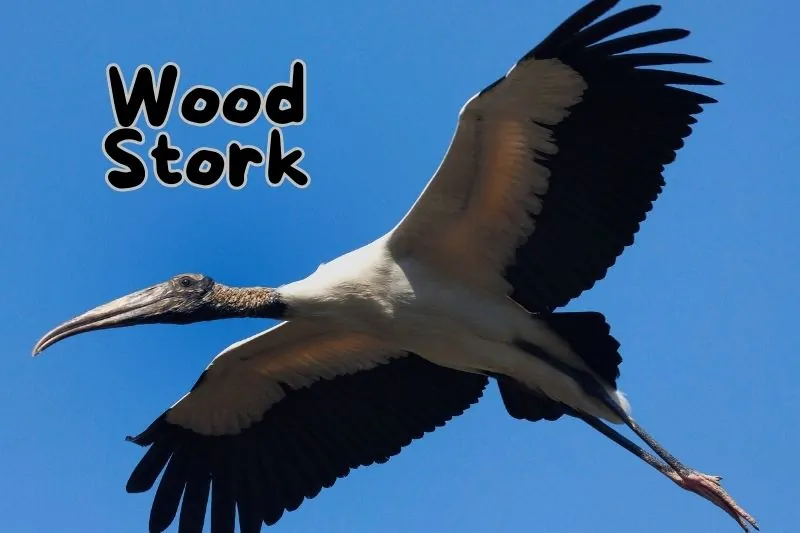
The Wood Stork is easily recognizable with its bald head and long, thick bill. It is primarily found in the southeastern United States and parts of South America.
They have a unique feeding strategy called “tactile feeding.” They move their partially open bills through the water and snap them shut the instant they touch prey, often working in shallow, muddy waters.
- Size: 33-45 inches (83-115 cm) in length
- Wingspan: 58-71 inches (147-180 cm)
- Habitat: Wetlands, swamps, and marshes
- Diet: Fish, amphibians, insects
3. Australian Pelican (Pelecanus conspicillatus)

Known for its exceptionally large bill, the Australian Pelican is found across Australia and nearby regions.
Australian Pelican holds the record for the longest bill of any bird species, which can measure up to 20 inches (50 cm) long. This large bill helps them scoop up fish, and they are often seen resting with the bill pouch hanging open to cool down.
- Size: 60-74 inches (152-188 cm) in length
- Wingspan: 96-110 inches (245-280 cm)
- Habitat: Coastal and inland waters, lakes, and rivers
- Diet: Fish, small birds, and amphibians
2. Great White Pelican (Pelecanus onocrotalus)
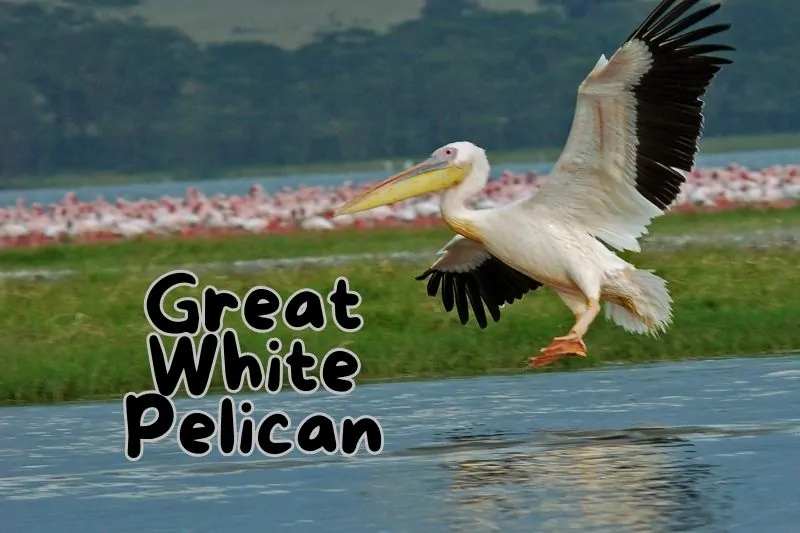
The Great White Pelican is a large bird with a distinctive pinkish hue on its white plumage. It is often found in parts of Africa, Europe, and Asia.
They can consume up to 4 pounds (1.8 kg) of fish per day. They often hunt cooperatively, forming a circle in the water to drive fish toward the center, where they are easily caught.
- Size: 55-71 inches (140-180 cm) in length
- Wingspan: 96-110 inches (245-280 cm)
- Habitat: Lakes, rivers, and marshes
- Diet: Fish, amphibians
1. Wandering Albatross (Diomedea exulans)

The Wandering Albatross holds the record for the largest wingspan of any living bird. Its impressive wingspan allows it to glide over the ocean for long distances with minimal effort.
They spend the majority of their lives at sea, only returning to land to breed. They can glide for hours without flapping their wings, and their ability to travel thousands of miles on ocean winds is legendary.
- Size: 42-51 inches (107-130 cm) in length
- Wingspan: 107-138 inches (274-351 cm)
- Habitat: Southern Ocean, islands in the sub-Antarctic region
- Diet: Fish, squid, crustaceans
Bottom Line
In summary, white birds with long beaks are primarily associated with water and feed on aquatic organisms. Their white plumage helps with thermoregulation by reflecting sunlight, which is beneficial in their open, sun-exposed environments. The long beaks serve practical purposes, aiding in hunting and foraging across a variety of habitats, from wetlands to coastlines. These birds demonstrate effective adaptations to their environments.



